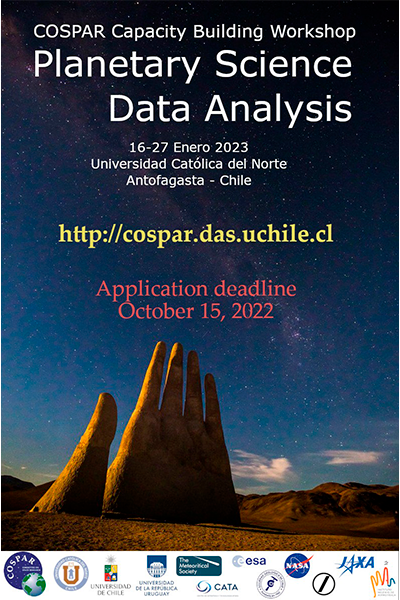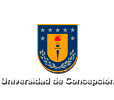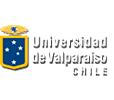[:en]
 Microworkshop on using TOPCAT, STILTS, and ADQL on Astronomical databases
Microworkshop on using TOPCAT, STILTS, and ADQL on Astronomical databases
Monday, October 16th, 2017
From 9:30hrs – 16:00hrs, coffee break provided
Campus San Joaquin, Pontificia Universidad Catolica de Chile
Delivered by: Dr. Martin Altmann, Center for Astronomy (ZAH), University of Heidelberg
Organized by: Rene A. Mendez (U. de Chile) and Marcio Catelan (PUC)
Sponsored by: Millennium Institute of Astrophysics (http://www.astrofisicamas.cl/)
NOTE: Due to logistical constraints, the audience is limited to 30 registered participants.
Attendees are **required** to bring their own laptop computer.
Participation bears no cost. To register please send an e-mail with your name, status (graduate student, postdoc, faculty, etc.), and formal affiliation to Mrs. Natalia Atencio (natencio@astrofisica.cl). Priority will be given to graduate students. Accepted participants will receive a confirmation e-mail, and further preparatory instructions.
Goals and summary of the microworkshop
======================================
Specialized software packages to query, retrieve, and do quick analysis of astronomical databases greatly simplify the scientific exploitation of them. After this microworkshop, the participants will have some familiarity with the software presented, being able to perform basic operations without having to consult the web manuals or other sources of help, and more complex ones, with the help provided by the arbiter of the software.
The packages that will be presented are:
TOPCAT:Tool for OPerations on Catalogues And Tables
STILTS: Starlink Tables Infrastructure Library Tool Set
ADQL:Astronomical Data Query Language
1. TOPCAT – learning to know and love the quintessential tool for plotting data for astrophysics and beyond
(See http://www.star.bristol.ac.uk/~mbt/topcat/)
1.1. Getting to know TOPCAT.
This module is intended to familiarize the attendant with the TOPCAT software, to highlight the main and basic functions. By the end everyone should be able to start the software, do data i/o, make basic plots in the plane and histogram windows, work with tables, and obtain data from remote (internet sources).
1.2. TOPCAT – the second date
This module is designed to intensify and deepen the aptness of the attendant in the usage of TOPCAT. While by far not designed to be exhaustive, by the end of this session, the participant should be able to use TC fluently, and be able to perform actions using most of the major functions that are available. This should convey enough information for everyone to become proficient with the daily use of this software.
2. STILTS – The powerful beast behind the «Cat».
(See http://www.star.bris.ac.uk/~mbt/stilts/)
This module is intended to present the STILTS software, which is underlying TOPCAT. Using STILTS without the TOPCAT visual interface presents a variety of advantages, but also some drawbacks.
3. Querying VO databases, using ADQL to get hold of your pet objects in large Catalogues, e.g. Gaia.
(See http://wiki.ivoa.net/twiki/bin/view/IVOA/ADQL)
This module seeks to explain and justify why this rather complicated approach has been chosen for the preferred access to large catalogue data, such as the Gaia catalogues. The participant needs to understand that accessing large databases, such as Gaia DRX, require some strategy on behalf of the accessing party, in order to keep the infrastructure accessible, given that capacities are finite. Basic examples for ADQL queries will be presented and some advanced options of object selection on the remote platform highlighted.
4. Hands on session using custom problems.
The first part of this module will consist of the presented carrying out some examples of problems, either canned ones, or coming out of the audience. The second part will consist of some exercises, i.e. problems, given to the audience by the presenter. Some of the resulting outcomes will be presented during the discussion of this of the hands on session.
About the Speaker: Dr. Martin Altmann studied in Bonn, obtaining his PhD on the kinematics of BHB/EHB stars in Nov. 2002. He then moved on to a Postdoc at the Universidad de Chile from 2003 – 2007. In 2007 he moved to Heidelberg, and joined the Gaia collaboration, being responsible amongst others for the Ground Based Optical tracking (GBOT, http://gbot.obspm.fr/) programme. Currently he is the leader of GBOT. In 2012 he was awarded (along with 500 million other EU citizens) the Peace Nobel price.[:es]
 Microworkshop on using TOPCAT, STILTS, and ADQL on Astronomical databases
Microworkshop on using TOPCAT, STILTS, and ADQL on Astronomical databases
Monday, October 16th, 2017
From 9:30hrs – 16:00hrs, coffee break provided
Campus San Joaquin, Pontificia Universidad Catolica de Chile
Delivered by: Dr. Martin Altmann, Center for Astronomy (ZAH), University of Heidelberg
Organized by: Rene A. Mendez (U. de Chile) and Marcio Catelan (PUC)
Sponsored by: Millennium Institute of Astrophysics (http://www.astrofisicamas.cl/)
NOTE: Due to logistical constraints, the audience is limited to 30 registered participants.
Attendees are **required** to bring their own laptop computer.
Participation bears no cost. To register please send an e-mail with your name, status (graduate student, postdoc, faculty, etc.), and formal affiliation to Mrs. Natalia Atencio (natencio@astrofisica.cl). Priority will be given to graduate students. Accepted participants will receive a confirmation e-mail, and further preparatory instructions.
Goals and summary of the microworkshop
======================================
Specialized software packages to query, retrieve, and do quick analysis of astronomical databases greatly simplify the scientific exploitation of them. After this microworkshop, the participants will have some familiarity with the software presented, being able to perform basic operations without having to consult the web manuals or other sources of help, and more complex ones, with the help provided by the arbiter of the software.
The packages that will be presented are:
TOPCAT:Tool for OPerations on Catalogues And Tables
STILTS: Starlink Tables Infrastructure Library Tool Set
ADQL:Astronomical Data Query Language
1. TOPCAT – learning to know and love the quintessential tool for plotting data for astrophysics and beyond
(See http://www.star.bristol.ac.uk/~mbt/topcat/)
1.1. Getting to know TOPCAT.
This module is intended to familiarize the attendant with the TOPCAT software, to highlight the main and basic functions. By the end everyone should be able to start the software, do data i/o, make basic plots in the plane and histogram windows, work with tables, and obtain data from remote (internet sources).
1.2. TOPCAT – the second date
This module is designed to intensify and deepen the aptness of the attendant in the usage of TOPCAT. While by far not designed to be exhaustive, by the end of this session, the participant should be able to use TC fluently, and be able to perform actions using most of the major functions that are available. This should convey enough information for everyone to become proficient with the daily use of this software.
2. STILTS – The powerful beast behind the «Cat».
(See http://www.star.bris.ac.uk/~mbt/stilts/)
This module is intended to present the STILTS software, which is underlying TOPCAT. Using STILTS without the TOPCAT visual interface presents a variety of advantages, but also some drawbacks.
3. Querying VO databases, using ADQL to get hold of your pet objects in large Catalogues, e.g. Gaia.
(See http://wiki.ivoa.net/twiki/bin/view/IVOA/ADQL)
This module seeks to explain and justify why this rather complicated approach has been chosen for the preferred access to large catalogue data, such as the Gaia catalogues. The participant needs to understand that accessing large databases, such as Gaia DRX, require some strategy on behalf of the accessing party, in order to keep the infrastructure accessible, given that capacities are finite. Basic examples for ADQL queries will be presented and some advanced options of object selection on the remote platform highlighted.
4. Hands on session using custom problems.
The first part of this module will consist of the presented carrying out some examples of problems, either canned ones, or coming out of the audience. The second part will consist of some exercises, i.e. problems, given to the audience by the presenter. Some of the resulting outcomes will be presented during the discussion of this of the hands on session.
About the Speaker: Dr. Martin Altmann studied in Bonn, obtaining his PhD on the kinematics of BHB/EHB stars in Nov. 2002. He then moved on to a Postdoc at the Universidad de Chile from 2003 – 2007. In 2007 he moved to Heidelberg, and joined the Gaia collaboration, being responsible amongst others for the Ground Based Optical tracking (GBOT, http://gbot.obspm.fr/) programme. Currently he is the leader of GBOT. In 2012 he was awarded (along with 500 million other EU citizens) the Peace Nobel price.[:]










